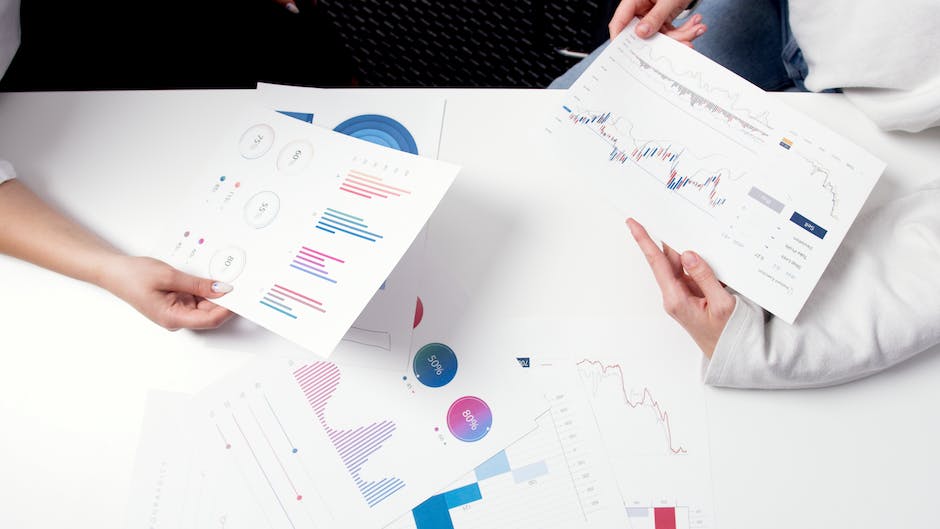As the global economy continues to evolve and technology advances, the stock market and trading industry have seen dramatic changes that have resulted in a plethora of trading platforms available for the general public. The path to successful investing often starts with a solid understanding of the basics, including understanding different types of investments such as stocks, bonds, commodities, ETFs and more. In addition to knowing the ins and outs of the industry, it’s crucial to align the trading platform you select with your investment goals and style. This involves thorough research of various platforms, evaluating their fees and commissions, trying their demo accounts, among others. Through this comprehensive approach, the daunting prospect of choosing the right trading platform becomes much more manageable and achievable.
Understanding Investing Basics
Understanding Investing Basics: The Foundation
Before choosing a trading platform, it’s important to have a basic understanding of investment. Trading encompasses a vast financial world that involves stocks, bonds, commodities, Exchange-Traded Funds (ETFs), and more. Each of these instruments carries its own set of potentials for risks and rewards.
Understanding How Markets Operate
Knowing how markets operate is critical in understanding investing. Three major types are Sellers’ markets, Buyers’ markets, and Balanced markets. Seller’s markets occur when demand exceeds supply, driving up prices. In contrast, Buyers’ markets occur when supply surpasses demand, reducing prices. Balanced markets occur when supply equals demand.
Understanding these market types could help you estimate the potential risks and rewards of investing in a specific market.
How Trades are Executed
Trades in the financial market are executed via a trading platform. A trader places an order to buy or sell a particular asset, which is then matched with a corresponding sell or buy order.
Bid price is the highest price a buyer is willing to pay for an asset, while Ask price is the minimum price a seller is willing to accept. The difference between these two is called spread. Understanding these principles can help you make a decision when executing trades.
Potential Risks and Rewards
Investing in trading has its potential risks and rewards. Risk varies with different types of assets. Higher risk often implies higher potential returns, but investing in high-risk assets needs a good risk management strategy.
Rewards or returns on investment may come in different forms like capital gains, dividends, or interest. Understanding the potential rewards will allow you to make informed decisions, balancing your risk and return.
Choosing the Right Trading Platform
Once you understand the basics of investing, you can move on to choosing the right trading platform, like E*TRADE, Robinhood, or TD Ameritrade.
Here are a few factors to consider:
- Ease of Use: Choose a platform with an interface that you can understand and navigate easily.
- Cost: Compare the trading fees and commissions charged by different platforms. Remember, high fees can eat into your profits.
- Resources: Look for a platform that provides resources like educational materials, research tools, and customer support.
- Security: Ensuring your money and personal data are secure is critical. Ensure the platform follows strict security measures.
Remember, the right platform for you depends on your personal preference and investment style. Always make sure to thoroughly research a platform before starting to trade on it. And remember, investing always carries potential risks and rewards.

Researching Various Trading Platforms
Before you begin your research on various trading platforms, it’s crucial to understand your trading needs. Are you looking for a user-friendly platform for beginners, or are you an experienced trader in need of advanced analytics?
Consider your investment goals and the types of trades you’re interested in. Maybe you are thinking about stocks, bonds, or other forms of securities. Whatever your investment preferences may be, you’ll want a platform that supports them.
Remember, finding a platform that aligns with your trading needs can drastically impact the success of your trading journey.
After assessing your needs, you can start researching different trading platforms. Don’t rush, as this should be a process that requires thoughtful consideration.
Dedicate time to exploring numerous platforms. Read reviews, visit their websites, and test out their demos, if available. This will give you firsthand experience of their interface, tools, and overall usability.
Each trading platform comes with its features which can include different asset classes, account types, trading tools, charts, and other resources. Look out for a variety of portfolio management options that can be useful to track your investments and make timely decisions.
If you’re new to trading, educational resources will be particularly useful. So you’ll want a platform that offers beginner guides, how-tos, and resources that can help you understand market trends and make informed decisions.
Furthermore, ensure the platform has strong customer support. This feature is crucial, especially if you encounter difficulties while trading or have questions about platform usage. Support can come via live chat, email, or calls, so choose what best suits you.
In an increasingly digital world, security plays a crucial role in trading. Therefore, choosing a platform that prioritizes security measures should be high on your checklist.
Most reputable trading platforms will have strict security measures in place like two-factor authentication, encrypted transactions, and secured servers to protect your personal and financial information. Be sure to dig into their security information or ask their customer support for clarification.
At this stage, you probably have narrowed down to a few potential platforms. Before making the final decision, be sure to check if there are any hidden fees, such as inactivity or withdrawal fees.
The ultimate goal is to choose a trading platform that best suits your needs, goals, and comfort level. It should offer a balanced blend of functionality, support, educational resources, and security that will empower you to make the best trading decisions possible.

Evaluating Fees & Commisions
Introduction: Understanding Fees and Commissions
When engaging in the dynamic world of trading, having the right platform can heavily influence your potential for success. One vital aspect to consider when choosing a trading platform is its associated fees and commissions. Like most service providers, trading platforms need to charge for their services, and these charges can come in various forms such as trading fees, account fees, and other related costs that are sometimes overlooked. Understanding how these charges work is crucial in selecting the most cost-effective platform for your trading needs.
Trading Fees
Trading fees can vary significantly between platforms. These are typically charged for every trade initiated (either buy or sell) and can take the form of a fixed fee per trade, a percentage of the trade amount, or a combination of both. Some platforms may also provide discounts or cheaper fees for frequent traders. Consider the volume and type of trading you plan to carry out and compare the fees across different platforms, taking into account your estimated trading activity.
Account Fees
Not to be confused with trading fees, account fees (also known as account maintenance fees or inactivity fees) are the costs associated with maintaining your trading account, whether or not you actively trade. These costs may be charged annually, quarterly or monthly. Some platforms may waive the account fee if a certain number of trades are performed, or if the account balance is above a certain threshold. It’s essential to review the account fee policies of each potential platform and consider how these might affect your trading budget.
Other Costs: Data, Transfer, and More
Besides account and trading fees, other costs might come into play based on the services you use. These may include data fees for access to real-time market data, transfer out fees for moving your assets to a different brokerage, or currency conversion charges for dealing in foreign markets. It’s crucial to contact the brokerage directly or search the platform’s fee schedule on their website to get a complete picture of all potential costs.
Low Fee Isn’t Always the Best
Remember, choosing the cheapest trading platform may not always be the best choice. You also need to consider the reliability of the platform, the quality of its trading tools, customer service, security, indices or commodities available, and so on. Sometimes, it might be worth paying slightly higher fees for a better overall trading experience.
By carefully considering and understanding different trading platforms’ fee structures, you can establish a profitable trading strategy that doesn’t get eaten up by unexpected costs.

Test Driving a Platform
Introduction: Picking the Right Trading Platform
Selecting the right trading platform is more than just a quick decision, it’s about finding a reliable tool that matches your investment strategy and trading style. Many platforms also offer demo accounts, giving you a golden opportunity to take them for a test drive. Below are a few guidelines on how to effectively assess a trading platform’s demo account.
Test Driving a Trading Platform’s Demo Account
1. Start with the Demo Account: Most trading platforms offer a demo account. This is essentially a practice account loaded with virtual money. It allows you to place dummy trades under real market conditions, without risking real money. Reach out to the customer support of the platform to secure a demo account if you don’t see one.
2. Navigability Check: The first thing to assess is how easy the platform is to use. Can you find all the features easily? Make a few navigations like opening an order, closing an order, setting stop losses, and take profits. If you find these tasks cumbersome, you may need to reassess if the platform is right for you.
3. Speed and Reliability of Execution: Place a few dummy trades and see how quickly orders are executed. In a fast-paced trading environment, speed matters, and even a slight delay can cause considerable losses. The platform you choose should execute orders swiftly and accurately.
4. Evaluate Analysis Tools: Take some time to use the various analysis tools available on the platform. This includes charting tools, technical analysis tools, and fundamental analysis tools. Get a feel for their ease of use and comprehensibility.
5. Research Capabilities: Access the research materials and resources to see how comprehensive and relevant they are. Is there a live news feed? Is there market commentary or analytical content? Evaluate the kind of information being provided, as you’ll likely rely on it to make your trading decisions.
6. Check Marketing Tools: Examine if the platform provides access to a range of marketing tools such as news alerts, market data, and social trading features, and how useful these are.
7. Customer Support: Lastly, reach out to customer support with a test query and assess their response time, knowledge, and helpfulness. Good customer support is vital in resolving any future issues.
Assessing a platform’s demo account should provide a clear insight into whether it meets your trading needs. Remember, great platforms not only make trading easier but also help you make more informed decisions.

While choosing a trading platform may seem overwhelming at first glance, breaking it down into manageable steps and components can make the process more accessible. The foundation of successful trading roots in an in-depth knowledge of investing techniques and mechanics, alongside the utilization of an efficient, economical, and user-friendly platform that meets your individual needs. Therefore, be diligent about researching different platforms, understanding their fee structures, and trying out their features before making your final decision. After all, the cornerstone of investment success is not just about making the right choices, but also about utilizing the right tools to execute them.

